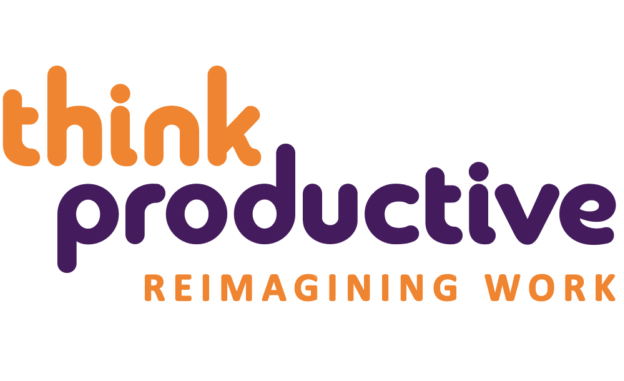A Productivity Checklist for Managers and Leaders
Hayley, one of our Productivity Ninja is often asked by delegates in our time management workshops how leaders can boost productivity. Like all things that relate to productivity and wellbeing, there isn’t just one answer. No one thing that you can do to help solve the existing problems and challenges. It’s a combination of lots of little things and here are some ways leaders can boost productivity:
As a leader you do have opportunity to create the right environment for your team, to benefit their productivity and wellbeing. It will improve morale, help retain staff, and allow your people to do a better job for your customers.
For Hayley, there are 2 things that make a huge impact. The first is to model good habits around your own productivity and wellbeing. Don’t tell people not to stay late while you are doing that, and sending emails to them in the evening and at weekends.We’ve put together a blog post to outline how you can champion work life balance as a manager and leader.
The second thing is to create a culture where it’s not just ok to talk about these challenges, but where it’s expected. Create an environment where people are able to challenge the norm, where people can ask the question ‘why do we do it like this?’. Set the conditions to help people to develop working habits and cultural practices that will enhance productivity and protect wellbeing for everyone.
How Leaders Can Boost Productivity?
Individuals are enthusiastic about find more productive ways of working, and see a personal benefit to this. We know this is true from the thousands of people we have trained over the years. Hayley believes that the culture and the attitude of leaders is a key enabler, as well as a common blocker:
“I hear so many delegates talking in our time management training about managing a high volume of emails and demanding workloads, and about how they can’t do something or find it difficult because their manager won’t approve”
So what do we actually suggest you do? Changing culture and modelling behaviour aren’t necessarily easy things to do. They are however eseential if you are looking to improve your productivity and that of your team.
Modelling Good Habits
Working styles differ, and that is where modelling exemplary habits can be difficult. The suggestions in our checklist are fairly universal and you can apply them to most knowledge work situations. Knowledge work is the kind of work where someone has the power within their role to decide what to do next. So a HR manager for a supermarket is a knowledge worker, the staff on the check outs can’t really decide they are not going to serve the next customer and go and do something else, so they aren’t knowledge workers, although they obviously need some knowledge to do their jobs.
1) Don’t Use Email for Urgent Stuff
Don’t send an email if you need a reply or for something to do be done urgently. By urgently I mean right away or within a day or two. Pick up the phone, or speak in person, or via Skype etc. You need to have impact, achieve clarity and ensure the urgency is understood and communicated back to you.
2) Don’t reply to emails instantly.
Turn off the notifications and go into your inbox when you choose to process them. Emails are a distraction and you should be modelling a focus on priority goals and activities.
3) Spend some time working away from your desk.
Have some time each day or week where you should only be disturbed in the event of an emergency. Be clear about what you consider to be an emergency. Be transparent about why you need this time and what you are trying to achieve. Encourage your team to do the same for really important tasks that demand high quality or urgency.
4) Encourage your people to solve problems themselves.
Next time someone comes to you looking for a solution, don’t offer one. Ask them what they think the options are. You might even ask them to go away and think about the options. Then ask them which option they think is best and why. Either support their decision, or highlight the challenges, then ask them again what they think they might do. Yes, this might take longer the first few times you try it. Eventually people will start to do this thinking before they come to you, and eventually will figure it out for themselves.
5) Be Receptive to Proposals and Ideas
Encourage new ideas and suggestions for new ways of working. Encourage things that make work more fun, more interesting or easier. If ideas are good encourage groups from your team to run with them and develop or prototype them.
6) Take breaks from your work.
That means, spending some time during the working day where you stop working. That could be for a lunch break, it could be to stop and chat with others. The times where you are busiest are often the most important times to take breaks. A lunch break should ideally be away from your desk, and your inbox. We all make less mistakes when we are well rested and encouraging your team to do this will help everyone to be more effective.
7) Finish on time.
We often speak to managers who will say things like “they all stay til late, which I know isn’t good for their wellbeing and productivity”. But if you are staying late too, it doesn’t matter what you say to your people, they will perceive this to be the culture of the organisation. Hayley knows one leader who reduced the working week for her people once they had completed productivity training with us, because she recognized that people were working more effectively and wanted to reward this.
One of the challenges you may have is what if you work better in the evening? People, and often managers, will tell us that they are most effective in the evening. For some people, this is the time of day when their energy levels are naturally at their best. But, for most people, this is because they aren’t being interrupted, by calls, emails, colleagues and clients with questions. One answer then is to ensure a similar lack of interruptions throughout the working day. Another is to explore options to work flexibly, rather than just longer.
It Will Take Time!
If you, or others currently don’t feel the environment that you work in supports productivity and wellbeing, you can take steps to change this. It will take time. You will need to persevere, be proactive in identifying where the challenges are, and engage your team:
Dont Dive In
Start by telling people you want to make some changes, but that you need their help. One of the things Hayley loves about our ‘How to be a Productivity Ninja’ seminar is that it’s very much about starting a conversation, about how individuals and teams can be more productive. That’s what you want to do. To start a conversation, that doesn’t focus on blame, that doesn’t look to justify why things are done in the way that they are. Find out what is, and what isn’t working for people.
Not Everyone is the Same
Accept that there isn’t a one size fits all when it comes to productivity and wellbeing. Support people to state what they need to work more effectively. If you can’t offer it, find a way to improve on what you have already to make it a bit better.
Encourage flexible working.
Assess the interest and consider how it might work. Understand your company policy, and work out what you need to cover on a daily, weekly and monthly basis, so that you understand the limitations and can set the right expectations.
Develop a Communication Manifesto
Talk about your email culture, your meetings culture and your relationships with your mobile devices and let your team develop a manifesto that defines the how, what and when of communication.
Respect Vacation and Downtime
Create an expectation that people will not work while they are on holiday, in the evenings and at weekends (unless, of course, this a contracted part of their job). We know from research, that countries with higher working hours are less productive. So lets use this, and encourage people to switch off, knowing this will help them be more productive when they do work and less likely to lead to burn out and stress.
Keep the conversation going.
Keep talking people, and finding ways to accommodate what people need to be more effective in what they do. Their job is to do the work, your role as a manager or leader is to create the right environment for that to happen.
Be Prepared to Experiment
Test out new ways of working and doing things. If it doesn’t work after a month, go back to the old way. But spend that month trying to make it work.
Talk openly about the fact that you all distract each other!
How might you better deal with this? Help people to put things in place to protect their attention at the times of the day when they are most effective.
Keep listening
Keep listening, keep taking action, and allow others to do so too.
Do let us know how you get on, and please get in touch if you need any help or have any further questions.
Written by Hayley Watts
Hayley is Think Productive UK’s Productivity Ninja for London and the South East of England.
If you want to find out more you can also chat to us at hello@thinkproductivena.com







